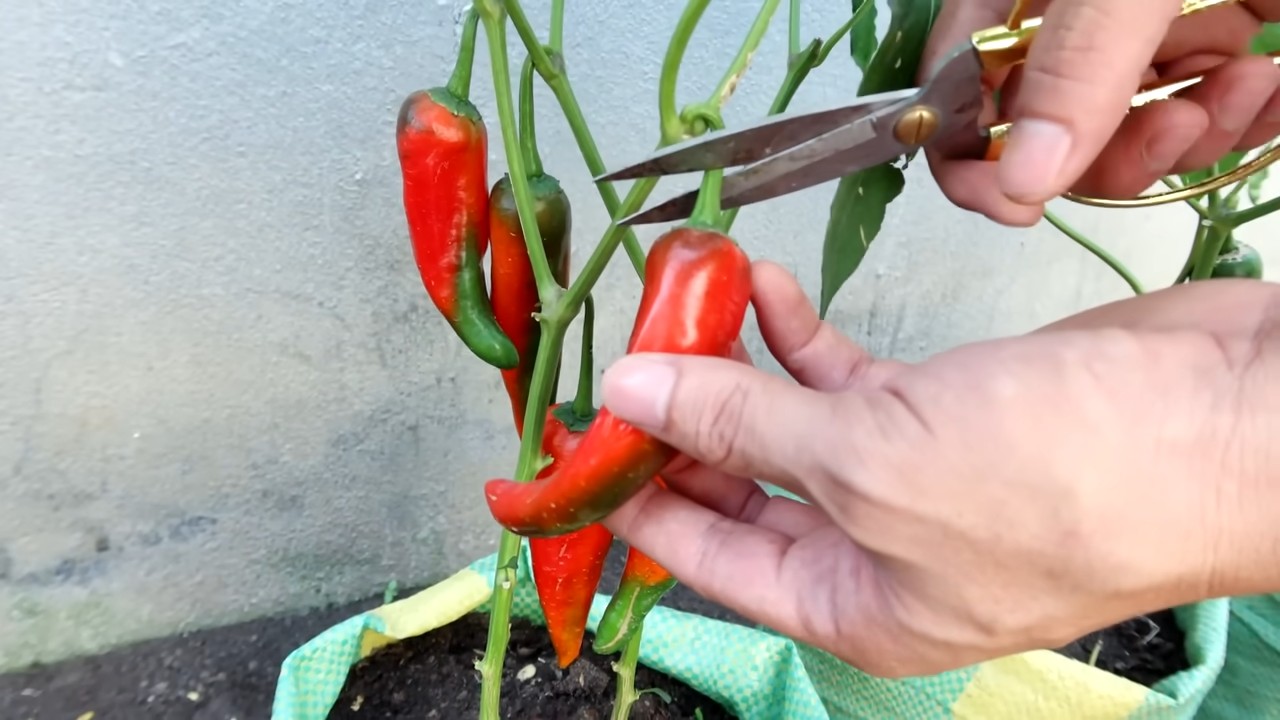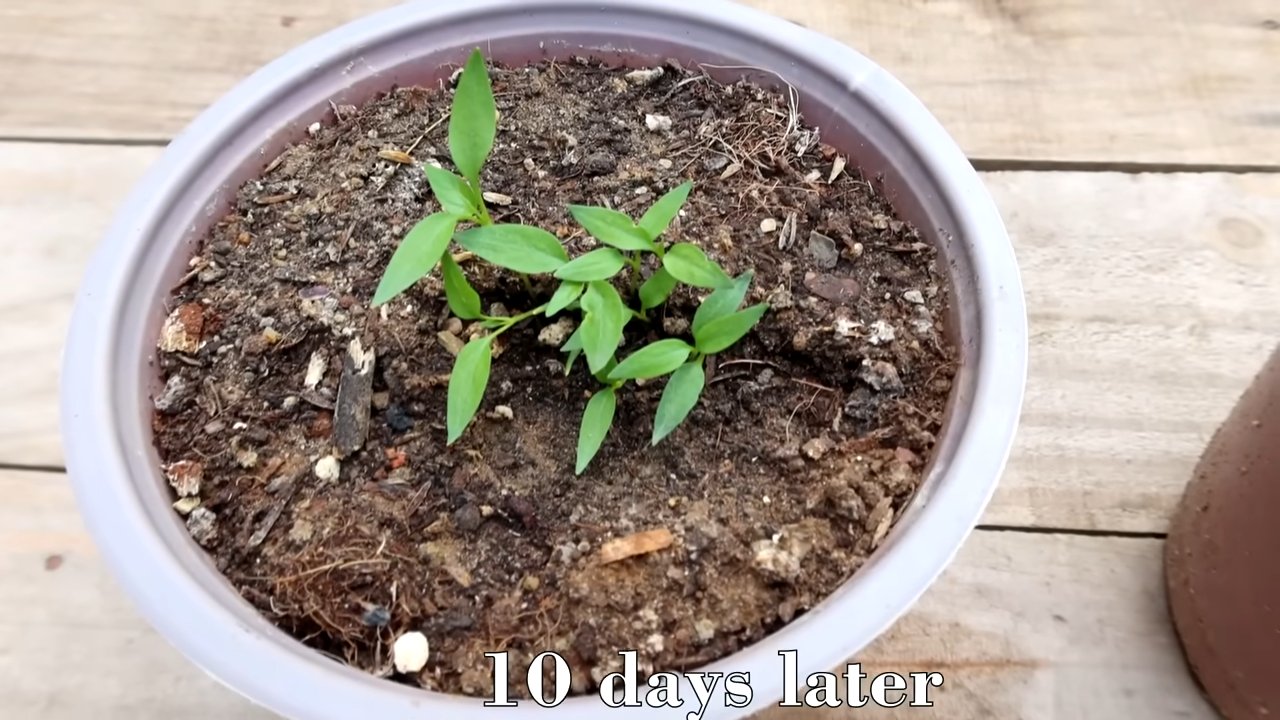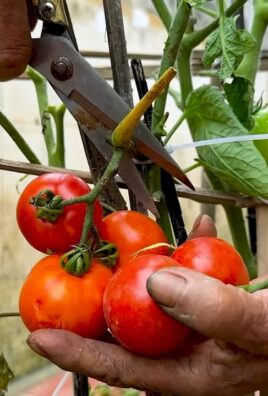Backyard Chili Recipe: Big Flavor, Big Fun! Ever dream of a chili so good, it makes your taste buds sing and your neighbors jealous? Well, grab your apron, because I’m about to share a secret weapon: a backyard chili recipe that’s bursting with flavor and surprisingly easy to make. Forget those bland, store-bought chili mixes; we’re going on a culinary adventure!
Chili, in its essence, is more than just a stew; it’s a symbol of community and comfort. Its roots trace back to the American Southwest, where resourceful cooks combined readily available ingredients to create a hearty and satisfying meal. From chuckwagon cookouts to family gatherings, chili has always been a crowd-pleaser.
But let’s be honest, sometimes life gets in the way, and we settle for less-than-stellar chili. That’s where this DIY recipe comes in. I’m going to show you how to create a backyard chili recipe that’s packed with big flavor, without spending hours in the kitchen. This isn’t just about making chili; it’s about creating memories, sharing delicious food with loved ones, and enjoying the simple pleasures of life. So, are you ready to unleash your inner chili master? Let’s get cooking!

Backyard Chili Recipe: Big Flavor, Easy Prep!
Okay, friends, let’s get down to business! I’m going to share my absolute favorite backyard chili recipe. This isn’t your bland, boring chili. This is the kind of chili that makes people say, “Wow, what’s your secret?” And the best part? It’s surprisingly easy to make. We’re talking big flavor with minimal fuss. So, grab your apron, and let’s get cooking!
What Makes This Chili Special?
Before we dive into the recipe, let me tell you what sets this chili apart. It’s all about layering flavors. We’re not just throwing everything into a pot and hoping for the best. We’re building a flavor profile that’s rich, complex, and utterly delicious. The key is using a combination of fresh and dried chiles, quality ground beef, and a few secret ingredients that I’ll reveal along the way.
Ingredients You’ll Need
Here’s a complete list of everything you’ll need to create this chili masterpiece:
* Meat:
* 2 pounds ground beef (I prefer 80/20 for flavor)
* 1 pound ground Italian sausage (optional, but adds a nice depth)
* Vegetables:
* 1 large yellow onion, chopped
* 2 bell peppers (any color, I like a mix), chopped
* 4 cloves garlic, minced
* 1 jalapeno pepper, seeded and minced (optional, for extra heat)
* 1 (28 ounce) can crushed tomatoes
* 1 (15 ounce) can tomato sauce
* 1 (15 ounce) can diced tomatoes, undrained
* 1 (15 ounce) can kidney beans, drained and rinsed
* 1 (15 ounce) can black beans, drained and rinsed
* 1 (15 ounce) can pinto beans, drained and rinsed
* 1 (15 ounce) can corn, drained (optional)
* Spices & Seasonings:
* 2 tablespoons chili powder
* 1 tablespoon cumin
* 1 tablespoon smoked paprika
* 1 teaspoon oregano
* 1/2 teaspoon cayenne pepper (optional, for extra heat)
* 1/2 teaspoon cocoa powder (trust me on this one!)
* 1/4 teaspoon ground cinnamon (another secret ingredient!)
* Salt and pepper to taste
* 1 tablespoon brown sugar (balances the acidity)
* 2 dried ancho chiles, stemmed and seeded
* 2 dried guajillo chiles, stemmed and seeded
* Liquids:
* 1 cup beef broth
* 1/2 cup strong brewed coffee (another secret weapon!)
* Toppings (optional):
* Shredded cheddar cheese
* Sour cream
* Chopped green onions
* Avocado slices
* Tortilla chips
Preparing the Dried Chiles
This step is crucial for adding that authentic chili flavor. Don’t skip it!
1. Toast the Chiles: Heat a dry skillet over medium heat. Add the dried ancho and guajillo chiles. Toast them for about 2-3 minutes per side, pressing down occasionally, until they become fragrant and slightly pliable. Be careful not to burn them! Burnt chiles will make your chili bitter.
2. Rehydrate the Chiles: Place the toasted chiles in a bowl and cover them with boiling water. Let them soak for about 20-30 minutes, or until they are softened.
3. Blend the Chile Paste: Remove the chiles from the water (reserve the soaking liquid!). Place the chiles in a blender or food processor along with about 1/2 cup of the soaking liquid. Blend until you have a smooth paste. Add more soaking liquid if needed to achieve the right consistency.
Cooking the Chili: Step-by-Step
Now for the fun part! Let’s get this chili cooking.
1. Brown the Meat: In a large pot or Dutch oven, brown the ground beef and Italian sausage (if using) over medium-high heat. Break up the meat with a spoon as it cooks. Drain off any excess grease.
2. Sauté the Vegetables: Add the chopped onion and bell peppers to the pot with the browned meat. Cook until the vegetables are softened, about 5-7 minutes.
3. Add the Garlic and Jalapeno: Add the minced garlic and jalapeno (if using) to the pot and cook for another minute, until fragrant.
4. Stir in the Chile Paste and Spices: Add the prepared chile paste, chili powder, cumin, smoked paprika, oregano, cayenne pepper (if using), cocoa powder, and cinnamon to the pot. Stir well to coat the meat and vegetables with the spices. Cook for another minute, allowing the spices to bloom and release their flavors.
5. Add the Remaining Ingredients: Pour in the crushed tomatoes, tomato sauce, diced tomatoes, kidney beans, black beans, pinto beans, corn (if using), beef broth, and coffee. Stir in the brown sugar.
6. Simmer the Chili: Bring the chili to a simmer, then reduce the heat to low, cover, and cook for at least 1 hour, or up to 3 hours. The longer it simmers, the more the flavors will meld together. Stir occasionally to prevent sticking.
7. Taste and Adjust: After the chili has simmered for at least an hour, taste it and adjust the seasonings as needed. You may want to add more salt, pepper, chili powder, or cayenne pepper to your liking.
8. Serve and Enjoy: Ladle the chili into bowls and top with your favorite toppings, such as shredded cheddar cheese, sour cream, chopped green onions, and avocado slices. Serve with tortilla chips or cornbread for a complete meal.
Tips and Tricks for the Best Chili
Here are a few extra tips to help you make the best chili ever:
* Use Quality Ingredients: The better the ingredients, the better the chili. Invest in good quality ground beef and fresh vegetables.
* Don’t Be Afraid to Experiment: This recipe is a great starting point, but feel free to experiment with different types of beans, vegetables, and spices to create your own signature chili.
* Make It Ahead of Time: Chili is even better the next day, as the flavors have had more time to meld together. Make it a day ahead of time and store it in the refrigerator. Reheat it gently before serving.
* Spice It Up (or Down): Adjust the amount of jalapeno and cayenne pepper to control the heat level of your chili. If you’re sensitive to spice, start with a small amount and add more to taste.
* Add a Touch of Sweetness: The brown sugar helps to balance the acidity of the tomatoes and adds a subtle sweetness to the chili. You can also use a tablespoon of molasses or maple syrup.
* The Coffee Secret: Don’t skip the coffee! It adds a depth of flavor that you won’t get from anything else.
* The Cocoa Powder Secret: The cocoa powder adds a richness and complexity to the chili that you won’t believe. It doesn’t make the chili taste like chocolate, but it enhances the other flavors.
* Slow Cooker Option: You can easily adapt this recipe for the slow cooker. Brown the meat and sauté the vegetables as directed, then transfer everything to the slow cooker. Cook on low for 6-8 hours or on high for 3-4 hours.
* Freezing for Later: Chili freezes beautifully! Let it cool completely, then transfer it to freezer-safe containers or bags. It will keep in the freezer for up to 3 months. Thaw it overnight in the refrigerator before reheating.
Serving Suggestions
Chili is a versatile dish that can be served in many different ways. Here are a few ideas:
* Classic Chili: Serve it in a bowl with your favorite toppings.
* Chili Dogs: Top hot dogs with chili and your favorite toppings.
* Chili Cheese Fries: Top french fries with chili and cheese.
* Chili Mac: Mix chili with cooked macaroni and cheese.
* Chili Nachos: Top tortilla chips with chili, cheese, and your favorite toppings.
* Chili Stuffed Peppers: Stuff bell peppers with chili and bake them in the oven.
Variations to Try
Want to mix things up a bit? Here are some variations you can try:
* Vegetarian Chili: Omit the meat and add more beans and vegetables. You can also use vegetable broth instead of beef broth.
* Chicken Chili: Substitute ground chicken or shredded chicken for the ground beef.
* White Chicken Chili: Use great northern beans instead of kidney beans and black beans

Conclusion
So, there you have it! This backyard chili recipe isn’t just another chili recipe; it’s a flavor explosion waiting to happen, a testament to the power of simple ingredients and a little bit of DIY magic. We’ve shown you how to unlock a depth of flavor you simply won’t find in pre-made spice blends or shortcut recipes. The secret? Toasting and grinding your own spices. This simple step elevates the entire dish, infusing every spoonful with an aromatic richness that will have your guests begging for the recipe.
Why is this a must-try? Because it’s more than just cooking; it’s an experience. It’s about connecting with your food, understanding the nuances of each spice, and creating something truly special. It’s about taking pride in knowing that you’ve crafted a chili that’s bursting with authentic, homemade flavor. And let’s be honest, who doesn’t love the bragging rights that come with serving up the best chili anyone’s ever tasted?
But the beauty of this backyard chili recipe lies in its adaptability. Feel free to experiment! Want a spicier kick? Add a pinch of cayenne pepper or a finely chopped habanero. Prefer a sweeter note? A tablespoon of brown sugar or a drizzle of molasses will do the trick. Vegetarian? Simply swap out the ground beef for your favorite plant-based protein or a mix of hearty vegetables like butternut squash and sweet potatoes. You can even add a splash of dark beer or coffee for an even deeper, more complex flavor profile. The possibilities are endless!
Don’t be intimidated by the idea of toasting and grinding your own spices. It’s incredibly easy and takes just a few minutes. The difference it makes in the final dish is truly remarkable. Trust us, once you’ve tasted chili made with freshly ground spices, you’ll never go back to the pre-packaged stuff.
We’re confident that this backyard chili recipe will become a staple in your household. It’s perfect for game day gatherings, cozy weeknight dinners, or any occasion that calls for a hearty, flavorful meal. So, gather your ingredients, fire up your stove, and get ready to embark on a culinary adventure.
We can’t wait to hear about your chili-making experiences! Share your photos, variations, and tips in the comments below. Let us know what you loved about the recipe and what you did to make it your own. Happy cooking!
Frequently Asked Questions (FAQ)
What kind of chili peppers should I use?
The type of chili peppers you use will depend on your spice preference. For a mild chili, consider using ancho chiles or pasilla chiles. For a medium heat, opt for guajillo chiles or New Mexico chiles. If you like it hot, try adding some chipotle peppers in adobo sauce or even a small amount of habanero pepper (use sparingly!). Remember to remove the seeds and membranes from the peppers before toasting them to control the heat level. You can also use a combination of different chili peppers to create a more complex flavor profile.
Can I use pre-ground spices instead of toasting and grinding my own?
While you can use pre-ground spices, we highly recommend toasting and grinding your own for the best flavor. Pre-ground spices lose their potency over time, and the flavor won’t be as vibrant. Toasting and grinding your own spices releases their essential oils, resulting in a much more aromatic and flavorful chili. If you absolutely must use pre-ground spices, be sure to use fresh ones and adjust the amount to taste. You may need to use more pre-ground spices to achieve the same level of flavor as freshly ground spices.
How long does the chili need to simmer?
The longer the chili simmers, the more the flavors will meld together. We recommend simmering the chili for at least one hour, but you can simmer it for up to three hours for an even richer flavor. Be sure to stir the chili occasionally to prevent it from sticking to the bottom of the pot. If the chili becomes too thick, add a little bit of water or broth to thin it out.
Can I make this chili in a slow cooker?
Yes, this chili can easily be made in a slow cooker. Simply brown the ground beef and onions in a skillet before adding them to the slow cooker. Then, add all the remaining ingredients and cook on low for 6-8 hours or on high for 3-4 hours.
What are some good toppings for this chili?
The possibilities are endless when it comes to chili toppings! Some popular choices include shredded cheese (cheddar, Monterey Jack, or pepper jack), sour cream or Greek yogurt, chopped onions, diced tomatoes, avocado, cilantro, jalapenos, and tortilla chips. You can also add a dollop of cornbread or a sprinkle of hot sauce for extra flavor.
Can I freeze this chili?
Yes, this chili freezes very well. Allow the chili to cool completely before transferring it to freezer-safe containers or bags. Be sure to leave some headspace in the containers to allow for expansion. The chili can be stored in the freezer for up to 3 months. When ready to eat, thaw the chili in the refrigerator overnight or in the microwave. Reheat the chili on the stovetop or in the microwave until heated through.
What kind of meat works best in this chili?
Ground beef is a classic choice for chili, but you can also use ground turkey, ground chicken, or even ground pork. For a richer flavor, consider using a combination of ground beef and ground pork. You can also add chunks of beef chuck or stew meat for a heartier chili. If you’re using a leaner meat like ground turkey or chicken, you may need to add a little bit of oil to the pot to prevent it from sticking.
Is this chili gluten-free?
This chili recipe is naturally gluten-free, as it doesn’t contain any wheat or gluten-containing ingredients. However, it’s always a good idea to double-check the labels of your ingredients to ensure that they are gluten-free, especially if you have a severe gluten allergy.
How can I make this chili vegetarian or vegan?
To make this chili vegetarian, simply substitute the ground beef with your favorite plant-based protein, such as crumbled tofu, tempeh, or a vegetarian ground beef substitute. You can also add a mix of hearty vegetables like butternut squash, sweet potatoes, or mushrooms. To make it vegan, ensure that you’re using a plant-based protein and that your broth is vegetable broth. You’ll also need to omit any dairy toppings like sour cream or cheese.
What if my chili is too spicy?
If your chili is too spicy, there are a few things you can do to tone it down. You can add a dollop of sour cream or Greek yogurt, which will help to neutralize the heat. You can also add a spoonful of sugar or honey to balance out the spiciness. Another option is to add more beans or vegetables to dilute the chili. Finally, you can add a splash of vinegar or lemon juice to cut through the heat.




Leave a Comment